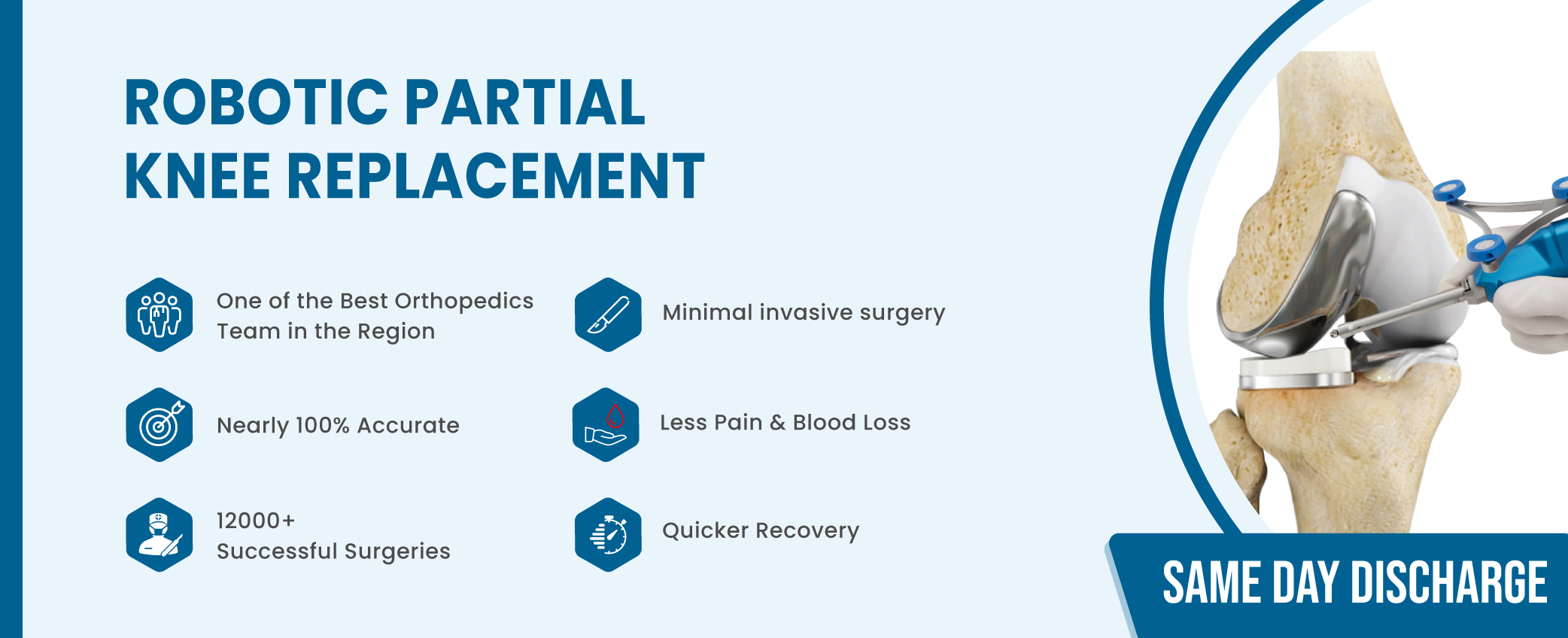Dr. Anoop Jhurani performed the first robotic-assisted partial knee replacement surgery
in Rajasthan in 2018.
Why should you choose Dr. Anoop Jhurani for partial knee replacement?
Dr. Jhurani, one of the partial knee replacement surgeons in Jaipur, and his team provide excellent partial knee replacement treatments. The expertise of our surgical team guarantees that there are no uncertainties regarding the precision and reliability of our surgical abilities.
When a patient chooses doctor Anoop Jhurani for partial knee replacement surgery, they will not only be comfortable, but they will also feel completely normal following the procedure. In most cases, they discharge patients the same day they undergo surgery, under the supervision of Dr. Jhurani.
Dr. Jhurani, who has performed over 15,000 knee and hip replacement surgeries and is a specialist in robotic partial knee replacement surgery and revision surgeries, claims that as a result, patient satisfaction has increased. The patient can resume everyday activities and feel normal once more. In order to provide his patients with the most satisfaction, he consults them to engage in aerobic exercises and other physical activities.

Benefits of a robotic partial knee replacement:
1. Robotic assist precise surgery
With a robotic-assisted partial knee implant, an orthopaedic surgeon can precisely target the damaged joint parts. The treatment leaves the healthy bone and tissue surrounding it unchanged; It resurfaced only the affected regions of the knee.
2. Faster recovery
Robotic surgery requires smaller incisions and disrupts surrounding tissues less than conventional replacement surgery, making it a less invasive procedure. Patients undergo less discomfort following treatment, and they recover more quickly; patients can resume regular activities earlier.
How long does it take to recover from a partial knee replacement?
Most patients recover from partial knee implants within 3 to 6 weeks, and they can resume regular activities within that time frame. Many patients discover that 6 to 10 weeks after completing physical therapy, they can resume their favourite sports.
Within days of the operation, they usually issue a cane to enable greater independence and start outpatient rehabilitation. After surgery, most patients can stop using their painkillers in 1 to 2 weeks.

How does a partial knee replacement work?
The knee joint’s damaged bone and tissue are removed during partial knee replacement surgery. The doctor performs the procedure if arthritis affects only a small portion of the knee. An artificial implant, often known as a prosthesis, is used to replace the missing tissue. Your knee’s remaining portion is unharmed. They typically use smaller incisions for partial knee replacements, which reduces recovery time.
For a robotic partial knee replacement in Jaipur, India, Dr. Anoop Jhurani is the only and best expert surgeon to meet with because he consistently completes this procedure flawlessly. He makes sure his patients are at ease and rapidly return to their regular lives. He uses robotic-handled arm technology, which reduces the possibility of error and provides nearly 100% accuracy throughout the operation. In Rajasthan, he pioneered MAKO Robotic surgery.






